Highlights
By now you have identified the campaign's beneficiary. The next phase involves selecting your campaign audience. This step will include considering the campaign beneficiary themselves and all of the individuals or groups who may influence your campaign's beneficiary.
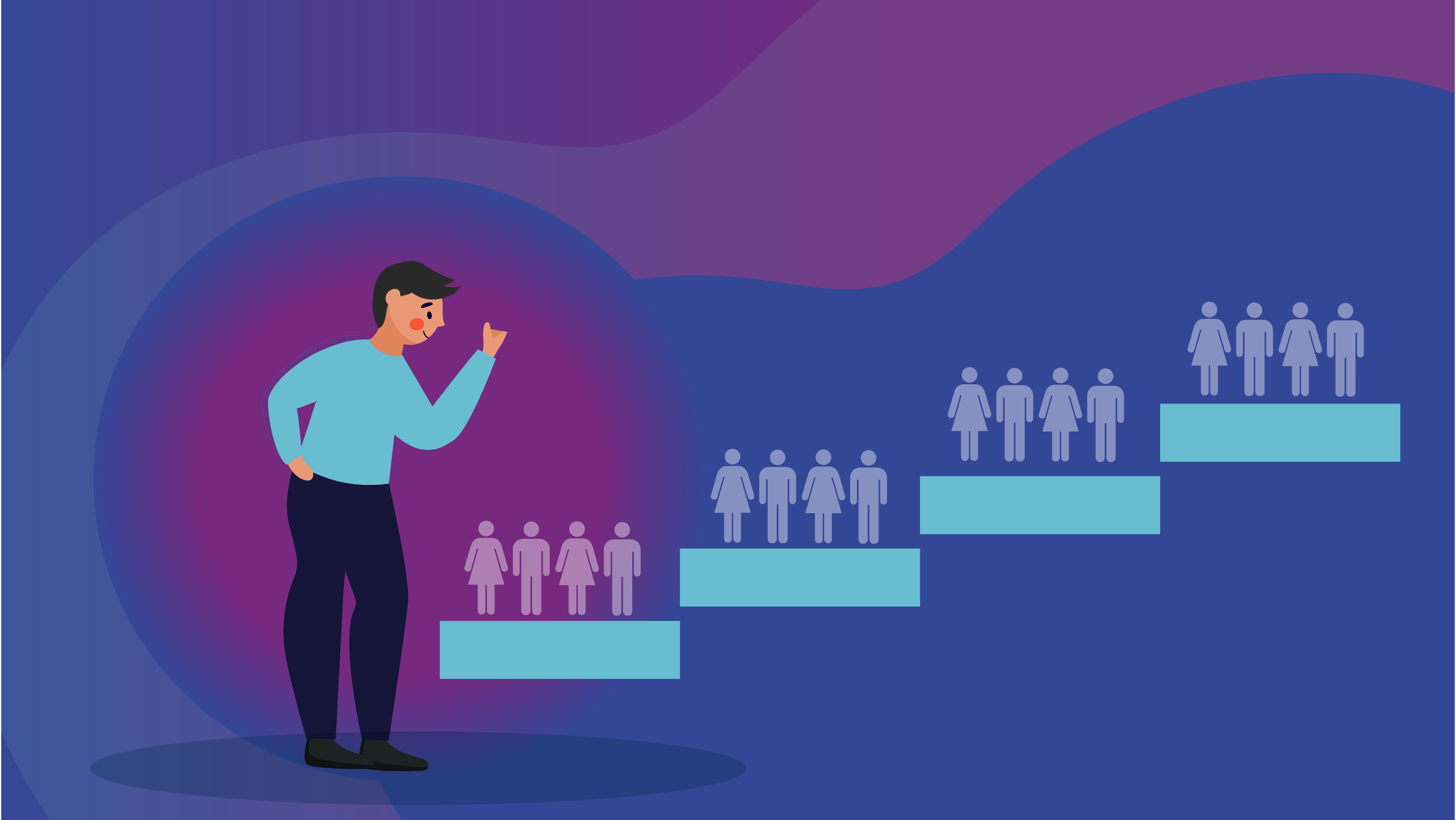
Social Ecological Model
The Social Ecological Model can help you gain a more nuanced understanding of the broader influences on your campaign beneficiary. This model is a framework to understand the complex interplay between people and their social, cultural, economic, and physical environments. It helps explain how multiple factors at different levels of society influence human behaviors:
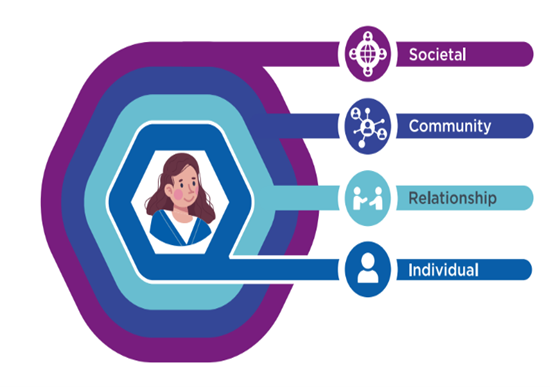
- Level 4 Societal – Broader cultural, economic, and political factors that shape behavior and health outcomes.
- Level 3 Community – Characteristics of the local community, including social norms, resources, and services.
- Level 2 Relationship – Interpersonal relationships with family, friends, peers, and social networks.
- Level 1 Individual – Personal characteristics, beliefs, attitudes, and behaviors.
Suicide is a complex issue caused by a mix of different factors. The Social Ecological Model can help conceptualize the facets of a person's life that may influence their risk of suicide. It can help you identify gaps in knowledge or awareness of behaviors/resources that you and your organization can influence. Learn more about the Social Ecological Model levels: Risk and Protective Factors for Suicide.
Interventions aimed at promoting health or behavior change should be specific about which level would be of primary focus. If your campaign is well resourced, then addressing multiple levels at the same time could increase your effectiveness or impact. For example, you may choose campaign components focused on youth (individual level) and their parents (relationship level).
We all encounter a wide range of people, organizations, and institutions. Social dynamics can influence our choices, well-being, and perception of the overall quality of our lives. Take some time to think about:
- Are we going to focus our campaign on the people in the disproportionately affected group, or others who may be a positive influence in their lives?
- What group(s) or individual(s) can be a positive influence on our campaign beneficiaries?
- What key institutions or organizations does the audience interact with that might be able to offer support?
- What group(s) or individual(s) can be a positive influence on our campaign beneficiaries?
- What is the larger societal context, and what are the risk and protective factors that impact suicidality in our affected population?
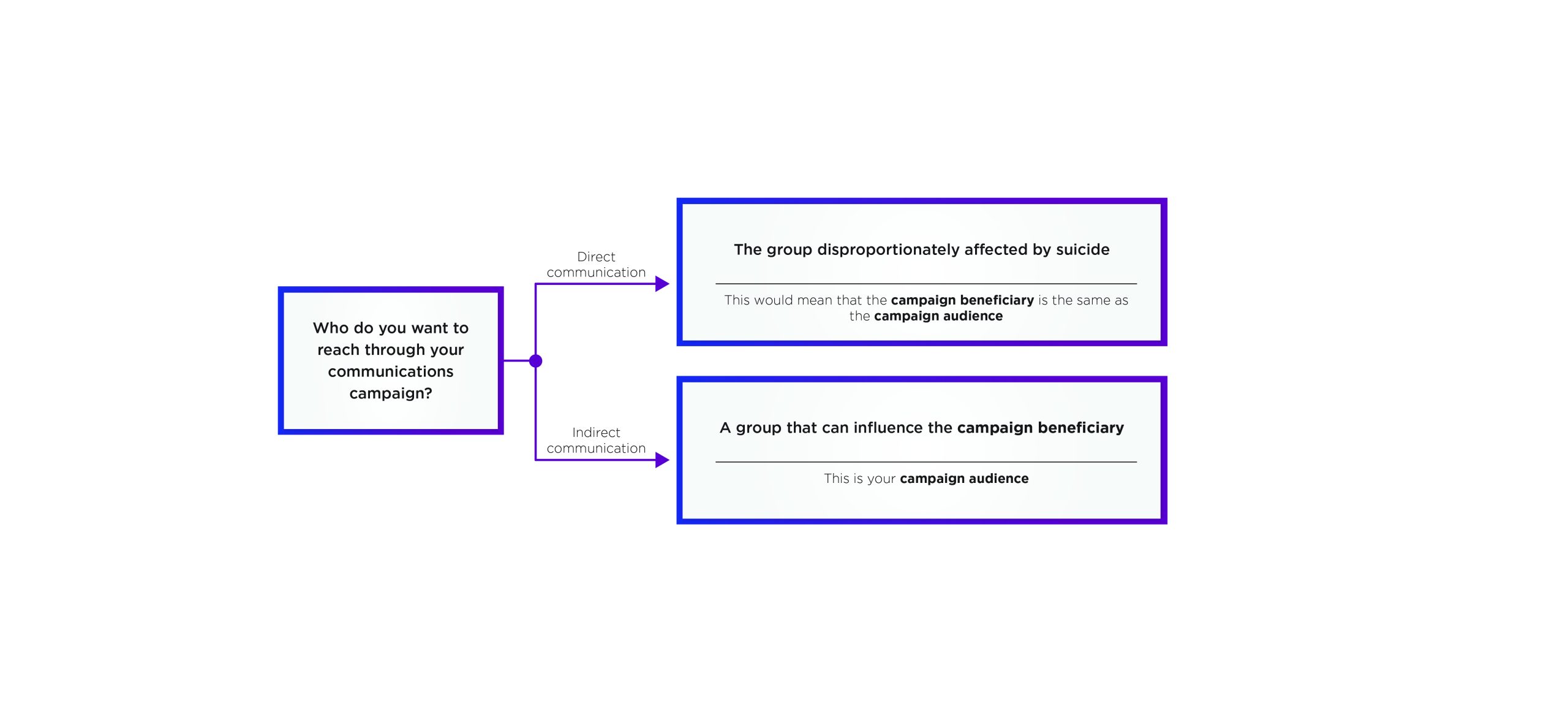
Creating a Social Ecological Map of your campaign beneficiary
Creating a Social Ecological Model persona can help you better understand what may influence the wellbeing of your campaign beneficiary. You have already identified some potential groups at higher risk of suicide in your community. Exercise 4 in the Brainstorm Book will walk you through creating a fictional person (also known as creating a "persona"). You'll then create a detailed Social Ecological Map based on what you know about them. Start with the individual as Level 1 and continue through each level of the model by listing the:
- Relationships such as friends, relatives, teachers, and/or colleagues (Level 2)
- Community influences such as institutions and organizations with whom the person might interact (Level 3)
- Societal influences which the person has limited control over (Level 4)
The completed persona(s) can help you decide which level of the Social Ecological Model your campaign can impact. It could be the campaign beneficiary. It may also be any of their influencers in levels 2 or 3 such as:
- Friends
- Family members
- School personnel
- The medical community
- Co-workers
- Religious leaders
The focus of your campaign may be a group, but thinking in terms of a single person may be helpful. This can humanize your audience and help you think about the relationships, communities, and societal influences on their wellbeing.
Consider: How might you dig a bit deeper to better understand the influences/factors affecting this group? Who might you talk to? We have a few completed examples for "Dannika" and "Jeff." These are personas of people who are at risk for suicide. Dannika is a high school student and Jeff is a middle-aged military veteran. The entities in the graphics below are just one example of how you could fill your persona map. You will choose the ones more relevant to your audience.
Sample Social-Ecological Map
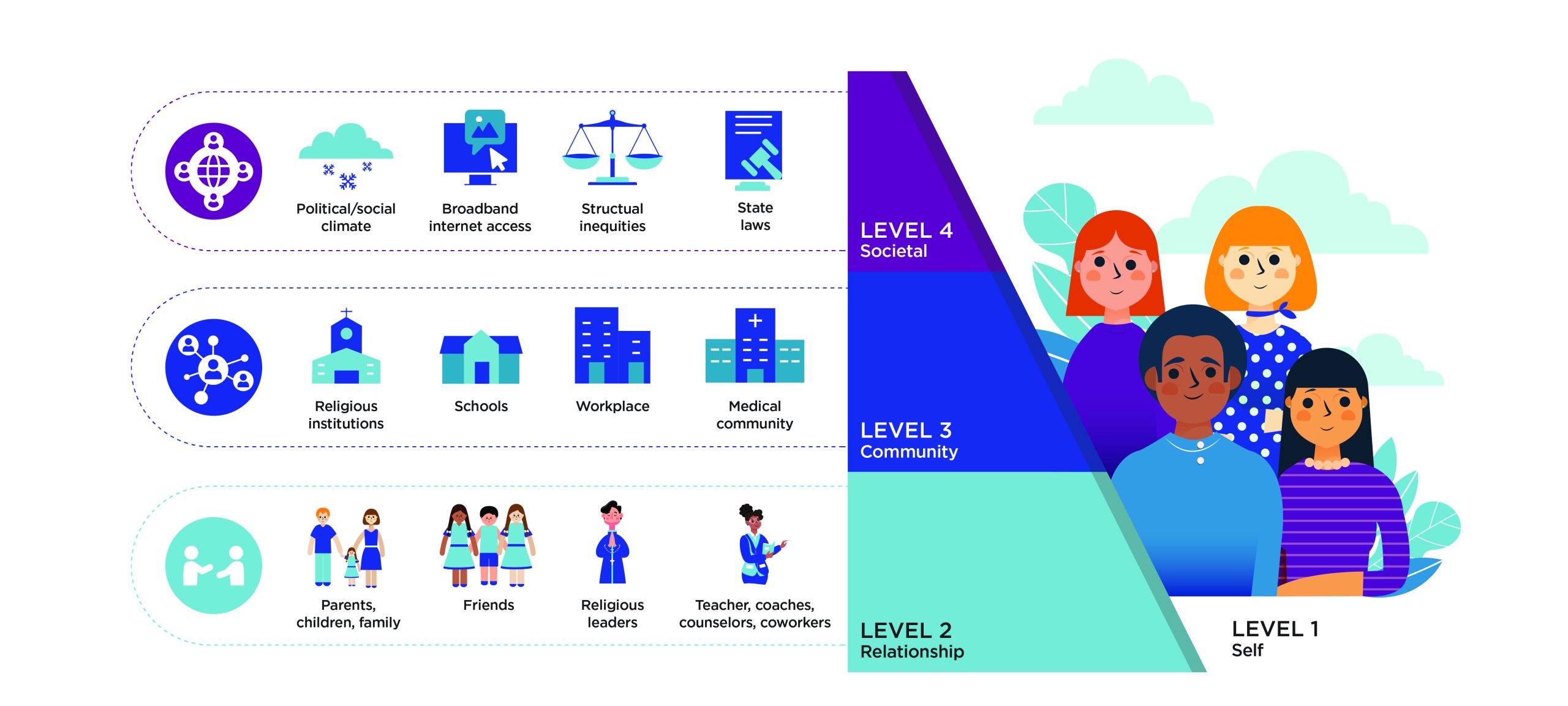
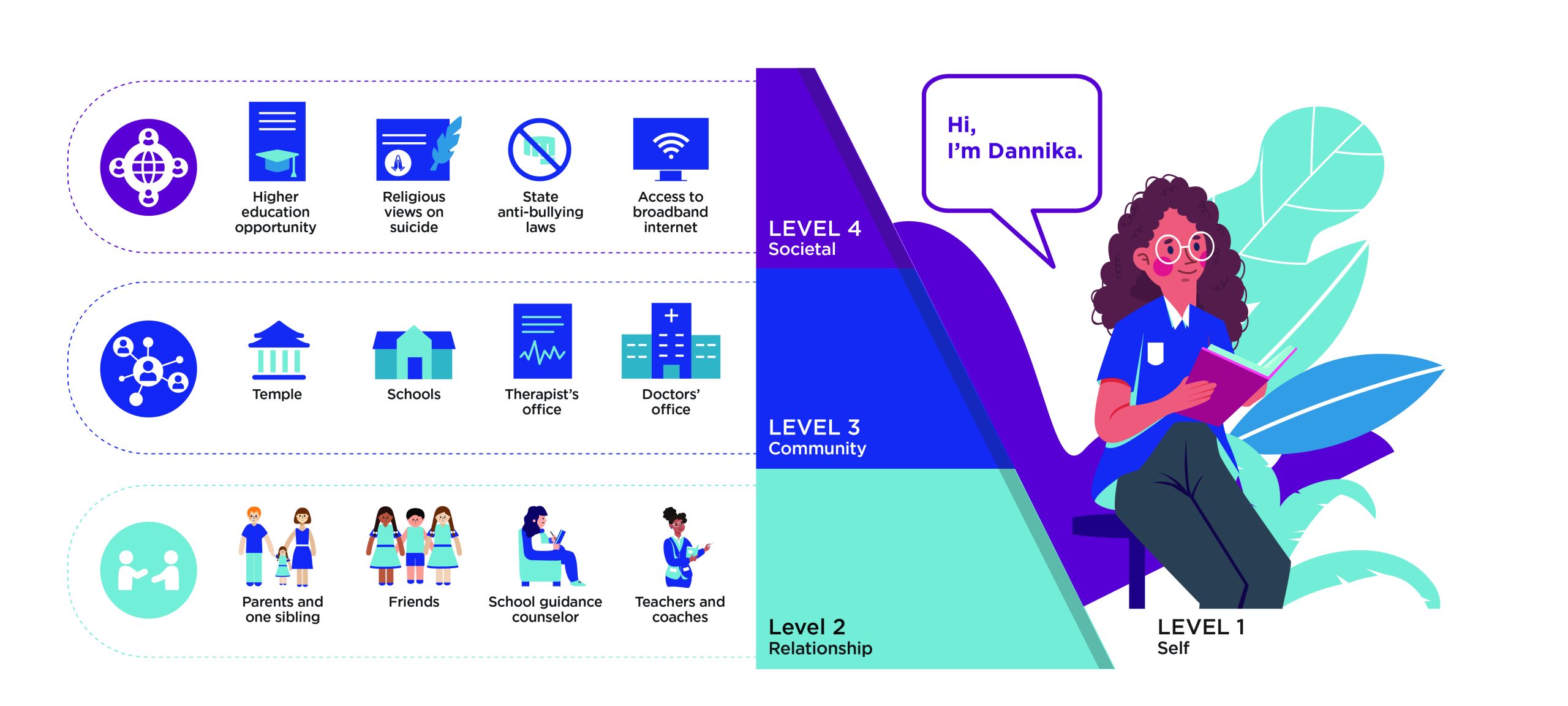
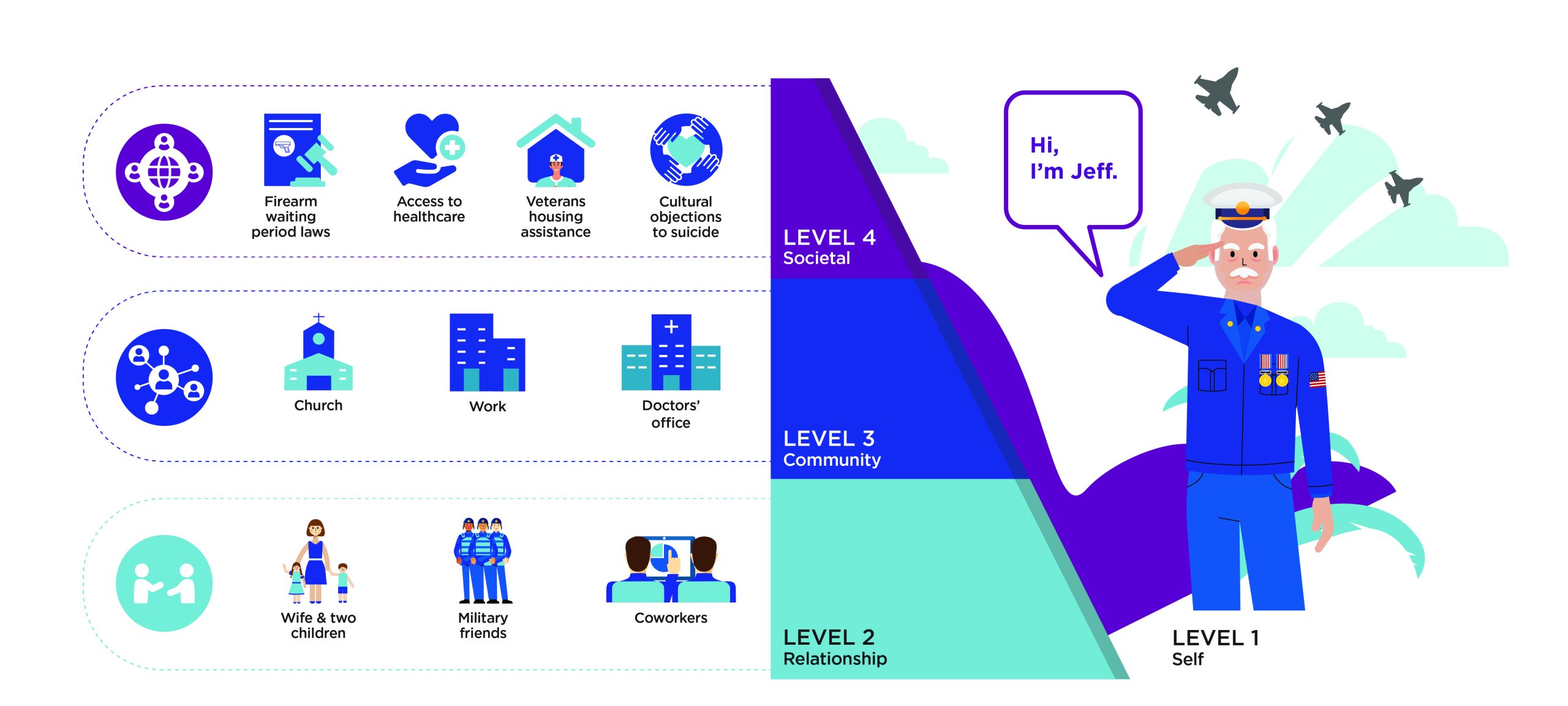
Choose your campaign audience
It's time to choose your campaign audience! Which group do you think you can best influence to change behaviors? In the next step, you'll dig into this group to really get to know how best to engage them.
Learn how your audience talks about suicide
It is important to learn how your campaign audience reacts to, absorbs, and processes information about suicide and suicide prevention. This will help you draft content in a way that is compelling and actionable. Use available resources such as Brandwatch or Mention and social media to gather data about your audience's behaviors, preferences, and existing conversations related to suicide and suicide prevention. This step can also help you identify other organizations working with your campaign audience. Consider collaborating with them if you think their work is science-based, accurate, and high-quality. This collaboration can amplify their efforts and produce greater impact for your organization with less effort.
Learn where and how to engage your audience
Learning how your campaign audience engages with health information allows you to identify the best means of communicating with them. Consider the following to identify effective platforms for your campaign to reference or use like:
- Hubspot, Hootsuite, Sprout Social or Pew Research Center to gather demographic data around who uses which social media platforms
- Less traditional channels: podcasting platforms such as Spotify, streaming services like Twitch, non-digital media such as bus or radio advertising, or promotions through gaming platforms.
You can also search for where discussions about suicide and suicide prevention are already taking place among your campaign audience. Many ongoing discussions may be among people who have experienced loss from suicide. Conversations about loss can help you understand how people think and talk about suicide. You can:
- Scan social media platforms and social media management tools
- Find and review relevant hashtags
- Use real-time social listening tools like Brandwatch or Mention to monitor specific keywords or hashtags
- Explore trending videos and identify commonalities in popular content
- Find and review relevant hashtags
- Attend virtual or live events hosted by organizations whose mandate aligns to that of your campaign goals
- Engage audience members by hosting focus groups. Consider hiring someone who has experience facilitating focus groups.
- Develop surveys/polls to gather additional insights about your campaign audience's attitudes, knowledge, behaviors, or preferences.
Build from existing relationships in the community to deepen your understanding of your campaign audience
You will want to consider where people in your community get health information, community resources, support, or connection. This could include schools, community centers, religious institutions, healthcare settings, or other relevant community settings. See if any of those organizations may be willing to talk with you about how they're reaching your campaign audience. This might be a good opportunity to make new partners. You can collaborate with organizations rooted in the audience's community. This may include individuals with lived experience or groups that are working on similar efforts. These opportunities can help you glean valuable insights and enhance the reach of your campaign. Together, you can:
- Share knowledge and best practices regarding information sharing with your campaign audience
- Explore opportunities to develop joint campaigns or enhance efforts of the partner organization
Exercise 5 in the Brainstorm Book provides you with a list of questions to consider while you build your campaign. These questions can test your understanding of and help you identify additional information about your audience.
- What do you already know about the campaign audience?
- Are there any sub-audiences for whom the campaign should further refine messaging?
- How does this audience consume information? Do they use traditional media? If so, which specific types of traditional media? Do they engage on social media and which platforms do they use? Is there something else they prefer?
- Are there any influential or respected members of the campaign audience that you could consider inviting to be a trusted messenger? Or is there a trusted messenger that this audience would listen to?
- Have other behavior change efforts been effective with this population? If so, what can you learn from them?
- What other groups may already be working with this audience?
